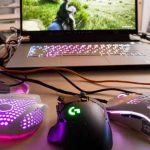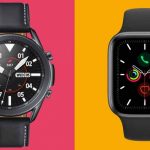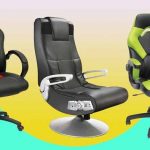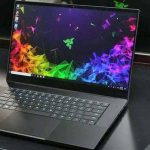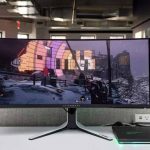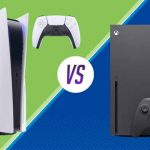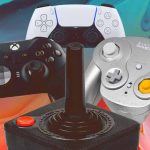The best gaming mouse is one that feels right for your grip and offers excellent performance with your favorite games. Getting a mouse that feels like it belongs in your hand, has the proper feature set and packs a strong sensor will improve the flow of your gameplay and make the hits you land feel more satisfying.
The best gaming mouse in 2022
Best Wireless Gaming Mouse: Razer Viper Ultimate
The best gaming mouse with a wireless connection we’ve tested is the Razer Viper Ultimate. This lightweight option has a true ambidextrous design with a pair of buttons on each side, making it suitable for both left- and right-handed gamers. Due to its low profile, it feels remarkably comfortable if you have smaller hands and use a claw grip or larger hands and use a fingertip grip.
It glides smoothly across mousepads and desktops, thanks to its high-quality feet. Also, since it connects wirelessly with a USB receiver, which comes with a signal extender, you won’t have to worry about a cable causing extra drag or clutter in your set-up. Its click latency is excellent, and even the most hardcore gamers shouldn’t notice a delay. Using the companion software, you can reprogram all of its eight buttons and assign a Hypershift button to enable a second layer of inputs.
Best Wired Gaming Mouse: Corsair SABRE RGB PRO
The best wired gaming mouse we’ve tested is the Corsair SABRE RGB PRO. It feels well-built and has a right-handed shape that’s well-suited for a palm grip for all hand sizes. Its plastic body has a slight texture, which adds grip, and it has two buttons on the left side that you can reprogram using the companion software.
It’s one of only a handful of mice currently available with an 8000Hz maximum polling rate. This produces more fluid cursor movements but requires a high-end PC to take full advantage of because it consumes a lot of system resources. It feels incredibly responsive thanks to its excellent click latency, and its low minimum lift-off distance means you can easily lift and reposition the mouse without the sensor registering intentional movements. As with many Corsair models, you can adjust the CPI in increments of one.
Best Budget Gaming Mouse: Logitech G203 LIGHTSYNC
If you’re on a budget, the best gaming mouse we’ve tested is the Logitech G203 LIGHTSYNC. This wired model has an egg-shaped design suitable for both left and right-handed users. Due to its small size, it’s best suited for a fingertip grip, no matter your hand size, though smaller hands can use it with a claw or palm grip. It also feels remarkably well-built and comfortable to use.
Despite its budget price point, it has amazing click latency and a consistent sensor. You can customize the mouse with Logitech G HUB software, which allows you to reprogram all of its buttons and assign a G-Shift button for an additional layer of inputs, should you need more. The software also allows you precisely set the CPI in steps of 50 within a fairly wide range, so you can get your sensitivity right where you like it.
Best Wired Lightweight Gaming Mouse: ROCCAT Kone Pro
A lighter mouse in hand can give you the edge, especially for FPS gaming, and in the last few years, a huge number of ultra-lightweight gaming mice have popped on the scene. So, which one is the best for gaming? We’ve picked the ROCCAT Kone Pro. At 65g, it isn’t the absolute lightest model out there, but it has more of a focus on comfort and customizability than many other lightweight options. It’s also somewhat larger than many ultra-lightweight mice, but its shape makes it almost universally suited for all grip types and hand sizes.
It has two side buttons on the left, a sturdy aluminum scroll wheel, and small, indented thumb rest. There are also a pair of RGB lighting zones that light up under the translucent plastic of the L and R-click buttons. Performance-wise, this mouse has a very low minimum lift-off distance, excellent click latency, and you adjust your CPI settings precisely by increments of 50 within a very wide range.
What should I look out for in a gaming mouse?
When deciding on a mouse, your priority should be finding one that’s comfortable for your hand. There are numerous sizes, shapes, and weights to consider. You might have the coolest-looking mouse with the most practical array of buttons, but if it’s not comfortable for you, you won’t be able to settle in with it. There are plenty of ambidextrous gaming mice and gaming mice for lefties in the list, too—if the goofy stance is more your style.
In the last few years, most gaming mice have also adopted very high DPI sensors (or, more accurately: CPI), so even a budget mouse will likely perform well. Most of these sensors can handle extremely high DPI counts at up to 20,000 DPI when realistically, you’ll play on a much lower sensitivity—generally under 2,000 DPI. The consensus is not to worry about that number too much. Instead, concentrate on finding a mouse with the ideal shape and weight, and obviously, one that’ll match your stylish set-up.
Pro gamers generally recommend lighter, more straightforward mice with few buttons to get in the way. Lighter mice won’t fatigue your wrist and can easily glide across the mouse pad at high speeds. Anything below 100 grams is often ideal for competitive mice. But something has to be said about how powerful you feel at the helm of a nice heavy mouse.
How do we test gaming mice?
We’ve used enough gaming mice to have a good feel for build quality, button placement, and shape. Our opinions on those aspects of mouse design are naturally subjective, but they’re also well-informed. The tricky part of testing gaming mice is analyzing the other part of the equation: tracking performance, jitter, angle snapping, acceleration, and perfect control speed, and determining how each of those issues affects the experience of using a mouse.
For that, applications such as Mouse Tester come in handy. We used this software to see if we could spot any glaring issues with the mice we used. In every gaming mouse we tested, though, angle snapping and acceleration were disabled in the mouse drivers by default (though a mouse can still exhibit acceleration from issues with the sensor itself) and never encountered any glaring performance issues.
Quick Shopping Tips for Buying Gaming Mouse
Optical or Laser? : Both sensor types can offer a great experience. But optical mice have slightly better accuracy. Laser mice work on more surface types. If you’re really picky, go for an optical sensor, preferably one designed or developed by PixArt.
Wireless or Wired? : Wireless mice have come a long way in the last few years, but they still have downsides, including limited battery life (particularly with RGB) and potential latency. If you opt for a wireless pointer, aim for one with 30 hours or more battery life. You’ll also need to decide if you want Bluetooth, a 2.4 GHz dongle connection or both.
Bluetooth is handy for switching among multiple devices, but introduces more latency. 2.4 GHz is faster, but requires a USB port and a dongle that’s easy to lose. Look for mice that let you store the dongle inside the shell.
Palm, Claw or Fingertip Grip? : It’s good practice to examine how exactly you hold your mouse. There are three common mouse grips:
Palm Grip – The base of your palm rests on the back of the mouse, with your fingers lying on top.
Claw Grip – Where your wrist rests on the mouse mat, the palm doesn’t touch the mouse, and your fingertips grip the edges of it and the buttons.
Fingertip Grip – Where your wrist and palm are elevated off the mouse mat and mouse. Again, the mouse is gripped with just the fingertips at its edges and on the buttons.
Knowing your grip style will help you find the perfect mouse, since grip type is often tied to the size of your hands. So a mouse designed for a fingertip grip will likely be larger than one designed for a palm grip.
DPI, CPI, IPS and Acceleration? : DPI and CPI are effectively the same marketing terms. Traditionally we use DPI in print to declare how many dots per inch something would be printed in, in regards to image clarity. CPI, however, stands for counts per inch, and that’s how many counts your mouse takes per inch it travels. Regardless, DPI is the more common usage, and it’s what we opt for here.
A higher DPI doesn’t necessarily mean a better mouse sensor, either. A delicate combination of DPI and IPS is essential. IPS, or inches per second, is the maximum velocity at which your sensor can still track those counts. The higher the IPS combined with the DPI, the better the sensor.
And then there’s acceleration. That’s how many Gs your mouse can handle and still track effectively. If you’re dashing the mouse back and forth and left and right in short, sharp movements, some mice may flake once they reach a specific G rating.
The best wireless gaming mouse is Logitech’s G502 Lightspeed. It’s the most well-rounded choice if you want comfort, a long-lasting battery, and the best selection and arrangement of buttons. But if you want some alternatives, there are some new, solid contenders below that offer different designs and features.
A: There are quite a few mice that are prominent in the FPS eSport business. Among the most popular are the Zowie FK series, the Logitech G502, SteelSeries Sensei, and the Razer Deathadder. All of which are used by many pro gamers each.
sypherpk currently uses the Razer Viper UltimateMouse. What Monitor does SypherPK use? sypherpk currently uses the Alienware AW2518H monitor.
Ninja uses the FinalMouse Air58, a limited edition collaborative release with FinalMouse itself. From the honeycomb design to the drag-free Phantom cord, though, it’s easy to see that this pointer prides itself on its featherlight form factor. That’s the biggest draw to Ninja’s gaming mouse.
Also read:
- How to Change Discord Status? How to Get Discord on PS4 and PS5?
- Lost Ark: White Wave Island Guide and How to Farm Providence Stones?
- Play Fortnite unblocked without Downloading ! + Fortnite Battle Royale
- Play Ninja Kiwi Classic Web Games + Best Games on the Ninja Kiwi Archive
- The Best Nintendo Switch Games With Bowling For Fans
- Where to Find All Ores in Minecraft 1.18? What is Ore Distribution?
